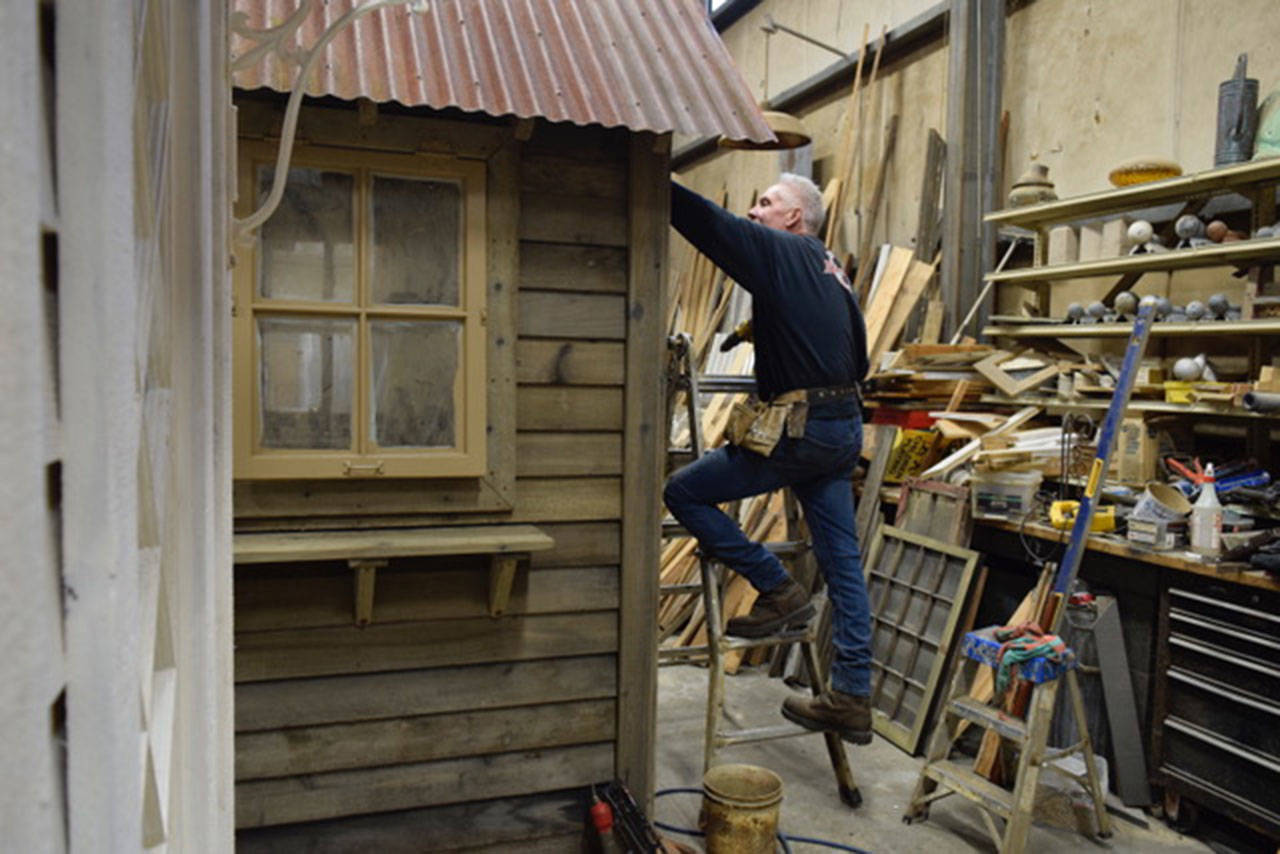Bob Bowling hopes to earn half of his annual income in the next five days.
Likewise, Linda Lee Nicol.
Both Whidbey residents are among the hundreds of vendors selling their homemade or utilitarian wares at the Northwest Flower and Garden Festival, opening today at the Washington State Convention Center in downtown Seattle.
Billed as the nation’s second-largest festival devoted to flora and fauna — and all the products directly or remotely related to planting, pruning and garden parties — Bowling and Nicol look forward to the annual event despite the months of frenzied preparation it takes.
“It’s a lot of work but once the show starts, the nice part is when people stop by to appreciate the craftsmanship,” said Bowling of Bob Bowling Rustics who specializes in high-end small garden and yard sheds made from recycled material that cost anywhere from $5,000 to $10,000.
“It’s my major marketing event for the year,” he said. “I earn half of my annual income for the year.”
Between six to 10 Whidbey Islanders have regularly been vendors at the Seattle show since its inception in 1989.
The event is a major investment for individual entrepreneurs. Renting a large booth space costs Bowling $5,000 for the five-day show that ends March 1.
Nicol’s smaller booth costs her $2,000 but she also says it’s well worth the cost to show off her products she sells under the name Whidbey Woolies.
Nicol’s felted hats are as colorful as springtime, made from 100 percent alpaca wool that she sells for $110 a piece. All are adorned in accent colors; some include a flower that is pinned on and can be interchanged with dozens of other colorful flowers or match her knitted neck warmers and flowing scarves.
Nicol admits to becoming somewhat of a mad hatter in the months in her Greenbank home leading up to the festival.
“Starting after Thanksgiving, it seems all I do is knit, knit, knit all day, every day,” she said. “I try and finish at least a hat a day and aim for about 100 hats for the flower and garden show.”
Nicol says she also depends on the Seattle event for about half of her income. She displays her handmade hats at about a half-dozen other regional craft shows and festivals throughout the year.
Bowling only sets up at one other show — the Sorticulture Garden Arts Festival, held in an outdoor setting in Everett every June.
Despite the gargantuan competition at the Northwest Flower and Garden Festival — including house-size boulders, live trees and fields of shrubs — Bowling’s tiny sheds and his one-man set-up get noticed.
He’s won “Best in Show” for vendor exhibit displays 2011, 2014 and 2015 at the Northwest Flower and Garden Festival and four other years at the same show, he earned “Best Visual Display.”
“His unique designs are a crowd favorite every year, and his work is at the very heart of what we want to have in the festival,” said Jeff Swenson, NWFGF show manager. “He is a great representative of the many special, creative and one-of-a-kind artisans that come from Whidbey Island.”
The event is expected to attract some 70,000 people to view 22 sprawling, spectacular display exhibits, 350 vendor and informational booths and take in 100 free seminars on three stages, including the popular container wars where celebrity garden gurus compete to arrange plants and flowers bound to “thrill, spill and fill” from pots in 15-minute contests.
But Bowling and Nicol say the enjoy the people-watching at the festival and the many questions asked about their craft.
Although, sometimes, the inquires can get a little repetitive.
“It’s exciting at first but then people seem to ask the same question again and again,” Bowling said. “They’ll look over the sheds and then ask, ‘How do you get your nails to be rusty?’
And then I think, really? All these interesting elements in my work that’s the only question you have for me?’”



